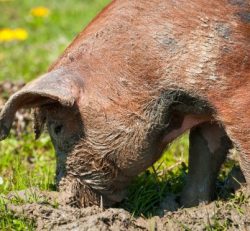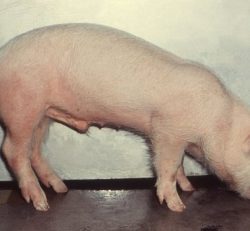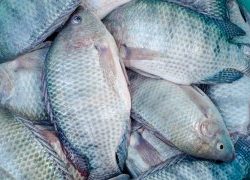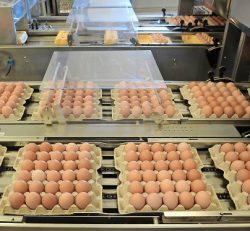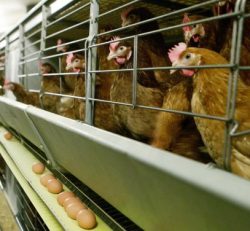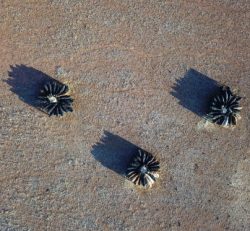CHALLENGES FOR EGG PRODUCERS IN THE MIDDLE EAST
This was stated by Simon Shane in his presentation: Improving efficiency and profitability of egg production in the gulf region, presented at the Alltech poultry seminar at VIV MEA, Abu Dhabi earlier this year. “The world is progressing and the world egg production is increasing,” Dr Shane stated. He mentioned a significant growth in egg production can be seen in China (+10% between 2011 and 2015). Also India, Brazil and Turkey are growth countries when it comes to the production of eggs.

Increased efficiency in the US
“The increased production is an answer to the increased consumption of eggs per capita. In the US for example, an average person consumed 244 eggs per year in 2014. The forecast for 2017 is 277 eggs,” explained Dr Shane. At the same time, the US poultry industry has increased its efficiency tremendously. “Between 1963 and 2013, we have lowered the feed intake per egg with 26%. Hen-day average production improved by 27%. Feed conversion efficiency enhanced by 42%, livability increased 5% and water use decreased by 32%. These improvements are the result of genetic advances, incorporating phenotypic evaluation, blood typing, SNIPS into sophisticated index selection and evaluation of traits.”
Feed and crops spared
Dr Shane pointed out that all these efficiency improvements also made the US poultry industry more sustainable. “If 1963 technology were applied to the current US egg production industry, to produce 7 billion dozen, we would need: 78 million more hens with 25 million pullets. These flocks will consume an extra 3.00 million tons of feed annually. This volume of feed would require: 2.1 million tons corn from 205,000 ha and 0.6 million tons soybeans from 195,000 ha”. Dr Shane also delved deeper into the production costs for US poultry producers and the current issues facing the US layer sector (profitability, welfare, regularly environment s and consumer acceptance).
Measures to control AI
After outlining the US situation, Dr Shane then moved on and explained some of the challenges of the poultry industry in the MEA region. “There are several current issues in the Middle East, such as diseases (AI, ND, IB, MG, LT), market instability, cost of ingredients, quality of ingredients, shell quality, labour availability and mechanisation and government restraints and regulations.” Avian Influenza (AI) is a catastrophic disease and in the Middle East region, both H5 and H7 strains of AI are prevalent. There is need for rapid identification and laboratory diagnosis, explained Dr Shane. “Eradication is not always a practical objective (for exotic AI). This requires pre-planning, funding, resources and indemnification. Suppression is a more realistic approach for endemic AI. This requires vaccination, limited movement and biosecurity,” he explained. When it comes to the impact of respiratory diseases, Dr Shane pointed out that mycotoxins can exacerbate the infection. The same accounts for inadequate ventilation. “Effective vaccination programmes are necessary for these type of infections,” said Dr Shane.

Suboptimal eggshell quality
Dr Shane also touched on the issue of suboptimal shell quality, a challenge for egg producers in the Middle East. Compromised shell quality can be the result of dietary inadequacy or imbalance of calcium, available phosphorous, vitamin D3 and micro-minerals. Dr Shane: “Shell quality is also reduced when there is a disease (IB, MS, ND, Adenovirus), a high ambient temperature (respiratory alkalosis) or improper handling and packaging.” In the case of nutrition, it is key to supplement the poultry feed with organic forms of Zn, Mn and Cu. Also mycotoxins are a problem and contamination can result in immunosuppression, lowered egg production, elevated mortality, degraded shell quality and the appearance of blood spots surrounding the egg yolk (ranging from blood spots of 1mm to ‘bloody eggs’). “Maize can become contaminated pre-harvest (with Aspergillus for example) and the contaminated corn kernels are then mixed into the total raw material load,” Dr Shane said.
Unity and proactive approach
Dr Shane concluded his presentation with a message for egg producers in the Middle East. “Create unity by establishing a common voice for lobbying and communication with the media. Make sure there is product diversity (new convenience products for consumers, QSRs, food service, added value applications). Also branding is important. Furthermore, have a proactive approach to welfare – introduce industry welfare programmes with standards, auditing and recognition. Ensure quality and safety – apply scientifically valid programmes with standards and surveillance (HACCP, ISO etc). It is also important to reduce the costs by for example using enzymes.
And lastly, abandon antibiotics.
Emmy Koeleman
Editor: All About Feed & Dairy Global
Source: www.poultryworld.net


